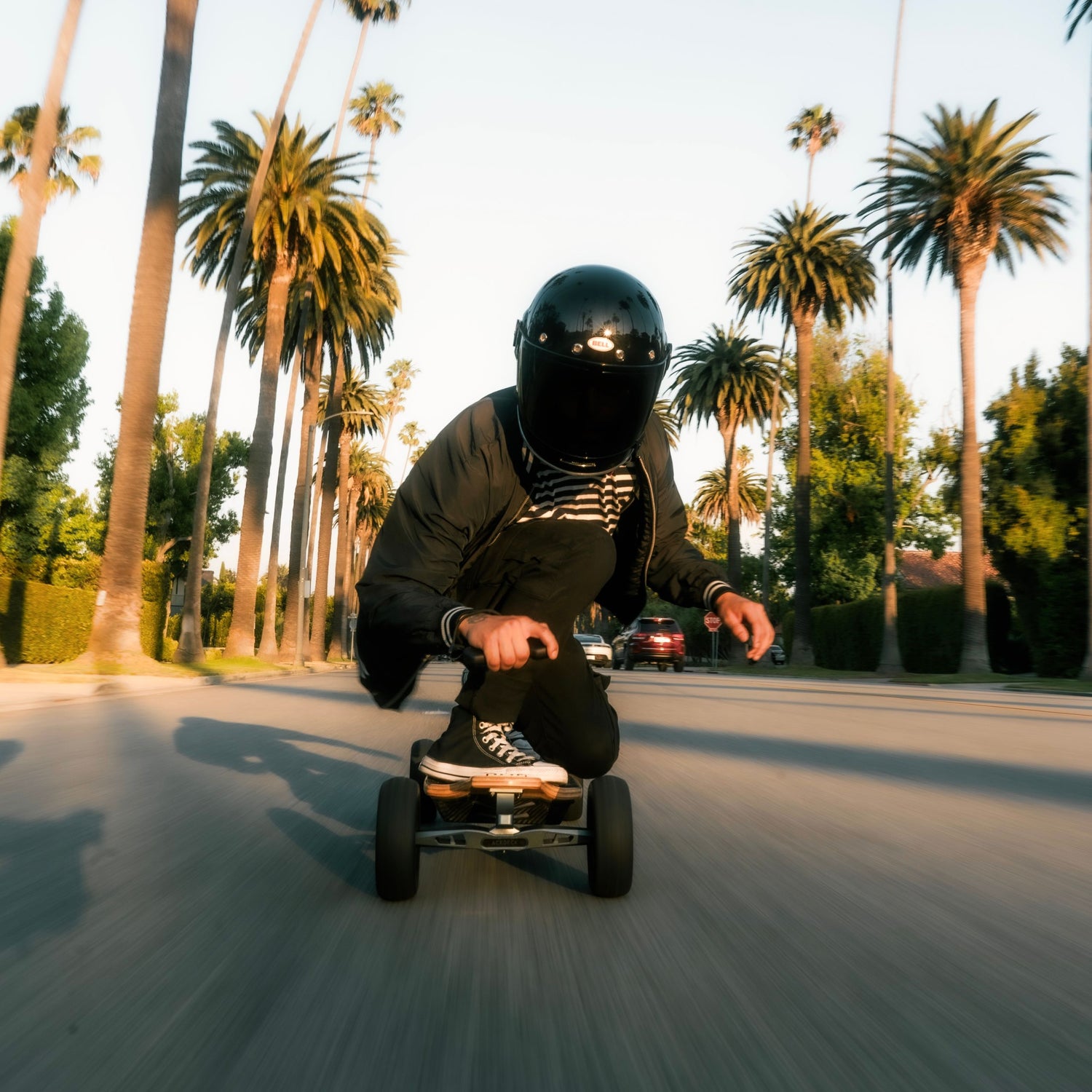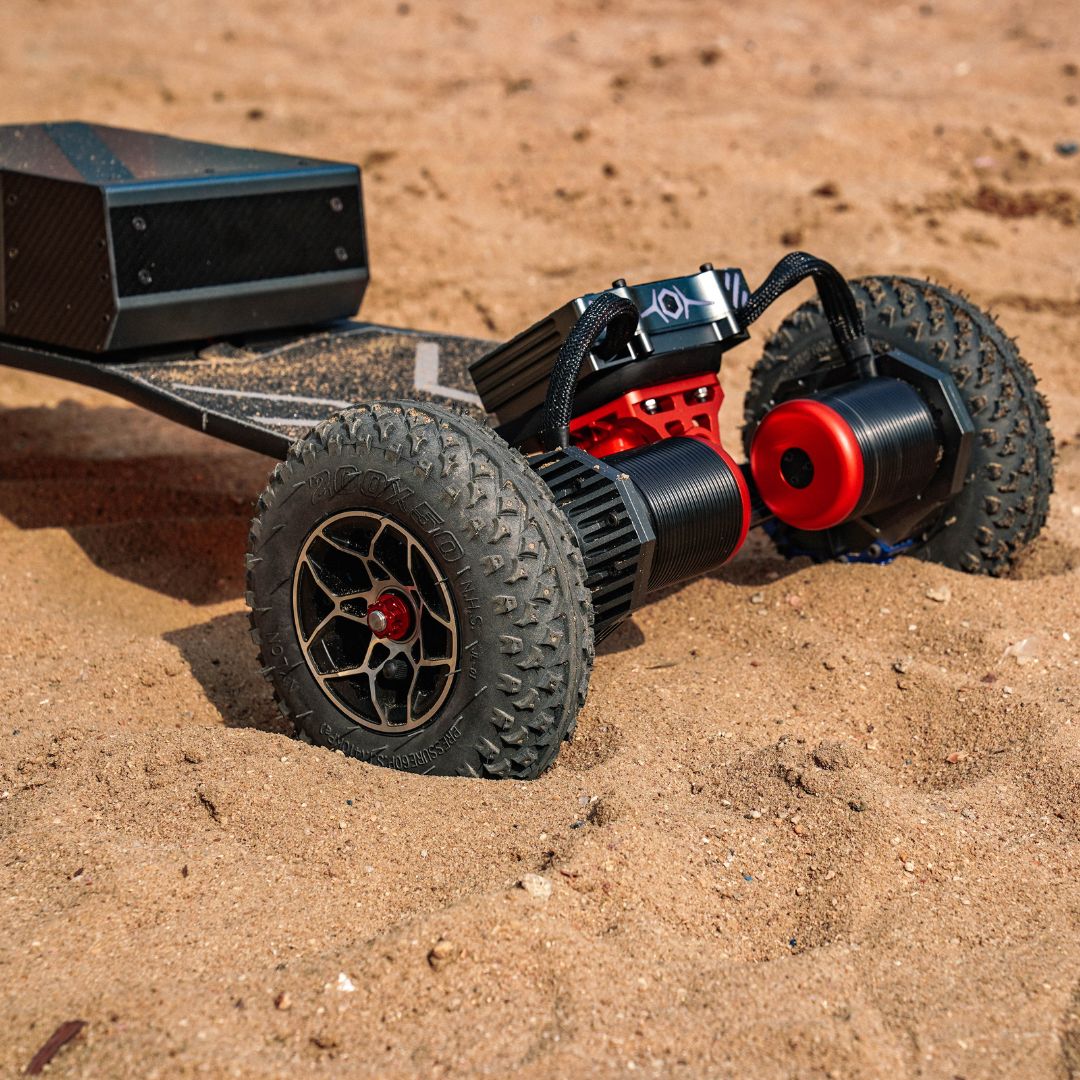You can find these three different drive systems on our Acedeck electric skateboards, and here you will learn about each of them, their qualities and shortcomings, and which best fits your ride.
For the past 10 years, most electric skateboards have been equipped with belt-driven motors, from slow entry-level boards to high-end, high-performance boards. Direct Drives have appeared on some models over time, but haven’t made a huge impact on the market. And for the past two years, Gear Drives have become increasingly popular, and we, Acedeck, have pushed the technology very far, fitting it to almost all of our boards. Yet, we still have a place for each motor-drive technology in our product line, and that’s because they each have their advantages and quirks. But, Spoiler Alert, the Gear Drive is king.
Belt Drive
Belt drives are a common type of drive system consisting of a motor mounted on a bracket, connecting the motor pulley to the wheel pulley by a rubber belt. As a tried and true drive train, it’s been the drive train of choice for eskate builders and is a staple of the electric skateboard world for many years.

Advantages
Simplicity is what makes it even to this day a very attractive option. Two pulleys and a belt, connecting the motor to the wheel, means that the system Direct Drive Belt Drive Gear Drive is very straightforward, and very easy to maintain, having only a single part that needs replacing, the belt. Belts of all sizes are easy to find and cost little. It is also considerably lighter than other drive systems.
It’s also very versatile, as the rider can fit any wheel size to his board, from small urethane wheels to big inflated tires, in quite a short amount of time. The rider is also able to modify the gear ratio with different pulley and belt sizes, which means adjusting the torque and top speed to his taste.
It is also cheaper to fit on boards, requiring few parts, and lowers the coast of the overall product.
Negatives
It is indeed easy to maintain, but some riders will see themselves having to replace belts or pulleys quite often. While most belt-driven boards come with belt guards, the system is still very open to debris, so you’ll often see stuck between the teeth of the pulley, or find yourself having to replace a belt during a ride, especially on trails and off-road.
Belt drives can also be quite noisy, and lack the efficiency found in other drive systems, which can impact the range, but also show strong rolling resistance, meaning the board won’t free-roll like a normal longboard, slowing you down much faster every time you release the throttle.
Finally, having to regularly check belt tension and alignment to assure confident braking ability and performance, can be a hassle to some.
Gear Drive
Broadly speaking, this is a fully enclosed system where transmission is managed through gears, as opposed to belts, all housed within a gearbox. The number of gears contained within the gearbox can differ, as can the materials employed (alloy or polymer) and the cutting profile of the gear teeth. Over the last three years, there has been a notable surge in their popularity, and are seen as the next step in reliability and performance.

Advantages
The two main benefits of gear drive systems are the durability and the efficiency they provide. Thanks to the gearbox, the drive is fully enclosed and protected from the elements. That means zero risk of debris and pebbles getting in there, which makes it the best choice for off-road use. But even without debris getting involved, belts get weary over time, unlike gears, which can last many thousand miles without ever needing repair or replacement.
The only maintenance needed is adding or replacing the grease inside the gearbox every few months, to keep the gears running freely.
As mentioned, they also offer greatly improved power transmission efficiency over belt drives, but also better torque and acceleration, with much smoother power delivery.
While some gear drives are loud, mainly due to the metal-to-metal contact between gears, we use an extremely hard and durable polymer compound instead, that makes it almost fully silent, and is able to handle vibrations and absorb shocks better than metal gears.
Overall, we truly believe the gear drive system to be, by far, the best drive system, and while we still got love for belts, once you’ve used a good gear drive, it’s hard to go back. Being able to roll over anything without any fear of damage to the drive or a belt snapping is worth every penny.
Negatives
One drawback of a gear drive system is that, for now, the gear ratio is fixed, which means they are meant for mainly one wheel size. Either small street wheels or AT tires. But we are working on finding a solution.
Another small negative would be the added weight over belt drives, but we already reduced the weight from our V1 to V2 gear drives by 40%! It is also more expensive than belt drives.
Direct Drive
In this system, the motor is directly fitted to the side of the wheel on the truck axle, (unlike hub motors, where the motor is inside the wheel). It has a direct transmission and a one-to-one ratio, and is most commonly paired with street wheels.

Advantages
Direct Drives are simply the best system when it comes to providing the closest experience to a traditional longboard. They have virtually zero rolling resistance, which means It free-rolls like longboard and can be kick pushed. And due to that direct transmission, It provides an incredibly smooth ride and instant power delivery. It is also the most efficient drive, especially combined with its free-rolling ability, giving you more range out of the same battery configuration.
With its very straightforward design, you can very easily swap any popular street wheel you like, with just a T-tool. If a wheel has a Kegel core instead of ABEC, the rider can easily change the adaptors on the side of the motor.
Of all the drive systems in the ESK8 world, it also requires the least maintenance. No belt to swap, no grease to apply. It is also the quietest, all you can hear is the sound of the wheel making contact with the road. They also give the board a low-profile visual, due to the lack of transmission system sticking out of the board, making it not only feel like a normal longboard, but also look like one.
Negatives
The main negative with direct drives is the low torque, acceleration, and braking performance they are able to produce, due to that 1:1 ratio. Making the motor bigger would impact the clearance, and pushing more amps would make them overheat. The solution? Four of them! In a 4WD configuration, just like on our Ares X3, which has remarkable torque and braking, and uphill climbing abilities, similar to our other powerhouses.
As mentioned, the clearance can be an issue. You want to use a wheel that is significantly larger than the motor, and avoid going down curbs unless you are facing perpendicular to them. They will also get hit with pebbles but the motor casing found on direct drives is designed to take a beating. The bigger the wheel, the less of an issue this is.
Special Mention - Hubs
Hubs are also a form of direct drive, but unlike the one above, the motor is fitted directly inside the wheel. It has the same benefits regarding free-roll and lack of noise, and it is even more low-profile, as you usually can’t even tell there is a motor, but it comes with many more drawbacks.
The motor being fitted inside the wheel, means you can’t use classic, full urethane longboard wheels, but instead, thin urethane sleeves that go around the motor and wear out pretty quickly. That thin sleeve means the ride is a lot less comfortable as it can’t absorb as many vibrations. The motor needs to be smaller than the wheel, which means hub-equipped board usually have very poor torque. It is also terrible at heat dissipation.
What To Choose
It’s quite simple, really. If you want the ultimate drive system for performance, reliability, and efficiency, while being able to ride over any terrain without worry, and with almost no maintenance, it’s the gear drive system. We truly believe we happen to make the best gear drives on the market, and you can find them fitted on our Nyx Z1 2023, Nyx Z1 Street, Nomad N1 , Ares X1 , and soon more.
But if you want the option to swap between all-terrain and street wheels, while keeping the cost, and the weight of the board down, then a belt is still a great option for you. Especially if you are not looking to do any off-roading, and noise isn’t a concern. The Stella S1, Stella Mini, Stella S3 the Ares X1 2022 , and the Nomad Belt would be your best options.
Finally, if like us, you also have a strong love for urethane street wheels, and the traditional feel of a longboard, with ultimate free-rolling ability and a stealthy look, there is nothing like the direct drive. For that, the Ares X3 with its 4WD configuration is the board to get.




1 comment
Евгений
Здравствуйте! Меня зовут Евгений, я живу в городе Москва в России! Я очень хочу купить Nyx Z1 !!! Вы в Россию можете продать такой электроскейтборд? И сколько времени будет доставка до Москвы?
Leave a comment
All comments are moderated before being published.
This site is protected by hCaptcha and the hCaptcha Privacy Policy and Terms of Service apply.